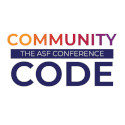The Apache Forrest xdocs document-v2.0 DTD
This is a subtitle
Sample Content
Hint: See the xml source to see how the various elements are used and see the DTD reference documentation.
Block and inline elements
This is a simple paragraph. Most documents contain a fair amount of paragraphs. Paragraphs are called <p>.
This next paragraph has a class attribute of 'quote'. CSS can be used to present this <p class='quote'> in a different style than the other paragraphs. The handling of this quoted paragraph is defined in the <extra-css> element in the skinconf.xml.
Anyway, like I was sayin', shrimp is the fruit of the sea. You can barbecue it, boil it, broil it, bake it, sautee it. Dey's uh, shrimp-kabobs, shrimp creole, shrimp gumbo. Pan fried, deep fried, stir-fried. There's pineapple shrimp, lemon shrimp, coconut shrimp, pepper shrimp, shrimp soup, shrimp stew, shrimp salad, shrimp and potatoes, shrimp burger, shrimp sandwich. That- that's about it.
A number of in-line elements are available in the DTD, we will show them inside an unordered list (<ul>):
- Here is a simple list item (<li>).
- Have you seen the use of the <code> element in the previous item?
- Also, we have <sub> and <sup> elements to show content above or below the text baseline.
- There is a facility to emphasize certain words using the <em><strong> elements.
- We can use
 <icon>s too.
<icon>s too. - Another possibility is the <img> element:
 ,
which offers the ability to refer to an image map.
,
which offers the ability to refer to an image map. - We have elements for hyperlinking:
- <a href="../index.html">
- Use this to link to another document. As per normal, this will open the new document in the same browser window.
- <a href="#section">
- Use this to link to the named anchor in the current document.
- <a href="../index.html#status">
- Use this to link to another document and go to the named anchor. This will open the new document in the same browser window.
- Targetted window control with jump and fork.
- See demonstration using class attribute on links.
- Oh, by the way, a definition list <dl> was used inside
the previous list item. We could put another
- unordered list
- inside the list item
A sample nested table Or even tables.. inside tables.. or inside lists, but I believe this liberty gets quickly quite hairy as you see.
So far for the in-line elements, let's look at some paragraph-level elements.
Apart from unordered lists, we have ordered lists too, of course.
- Item 1
- Item 2
- This should be 3 if my math is still OK.
Various presentation formats
This sample document, written in document-v20 XML can be presented via Forrest in a number of different formats. The links in the following list show this document in each of the currently available formats.
Each of the formats can be made available as a link near the top of the page. Actual placement of those links depends on the skin currently in use. Those links are enabled in the skinconf.xml via the <disable-XXX-link> elements in the skinconf.xml
| Presentation Format | Description | skinconf.xml Element |
|---|---|---|
| HTML | This document in HTML format. | Always generated by default. Cannot be turned off. |
| XML | This document in its raw XML format. | <disable-xml-link>. By default, set to true, meaning that this link will not be shown. |
| This document as Adobe PDF | <disable-pdf-link>. By default, set to false, meaning that this link will be shown. | |
| Text |
This document as straight text. For additional information see the Forrest text-output plugin. |
<disable-txt-link>. By default, set to true, meaning that this link will not be shown. |
| POD |
This document as Perl POD (Plain Old Documentation). Text with minimal formatting directives. If on a *nix system with perl installed, see "man perlpod". For additional information see the Forrest pod-output plugin. |
<disable-pod-link>. By default, set to true, meaning that this link will not be shown. |
Using sections
You can use sections to put some structure in your document.
Sections, the sequel
Just some second section.
Section 2.1
Which contains a subsection (2.1).
Showing preformatted source code
Enough about these sections. Let's have a look at more interesting elements, <source> for instance:
// This example is from the book _Java in a Nutshell_ by David Flanagan.
// Written by David Flanagan. Copyright (c) 1996 O'Reilly & Associates.
// You may study, use, modify, and distribute this example for any purpose.
// This example is provided WITHOUT WARRANTY either expressed or implied.
import java.applet.*; // Don't forget these import statements!
import java.awt.*;
public class FirstApplet extends Applet {
// This method displays the applet.
// The Graphics class is how you do all drawing in Java.
public void paint(Graphics g) {
g.drawString("Hello World", 25, 50);
}
}
CDATA sections are used within <source> elements so that you can write pointy brackets without needing to escape them with messy < entities ...
<pointy>
easy
</pointy>
Please take care to still use a sensible line-length within your source elements.
Using tables
And now for a table:
| heading cell 1 | heading cell 2 | heading cell 3 | ||||
|---|---|---|---|---|---|---|
| data cell | this data cell spans two columns | |||||
| Tables can be nested: |
|
|
||||
Using figures
And a <figure> to end all of this. Note that this can also be implemented with an <img> element.

Using map and area

Using class attribute on links
The document-v13 had elements <fork> and <jump>. In document-v20, those elements no longer exist but the functionality can be duplicated by using the @class attribute. Even though the opening of separate windows should be under the control of the user, these techniques can still be employed.
|
Document V1.3 |
Document V2.0 |
|---|---|
|
<fork href="../index.html"> |
<a class="fork" href="../index.html"> |
|
<jump href="../index.html"> |
<a class="jump" href="../index.html"> |
DTD changes
See the generated DTD reference documentation.
Changes between document-v13 and document-v20
- Renamed <link> to <a>
- Removed <fork> and <jump> in favour of the <a> element. See demonstration using class attribute on links.
- Enabled use of XInclude. See example in the 'forrest seed sample' site.
Changes between document-v12 and document-v13
All v1.2 docs will work fine as v1.3 DTD. The main change is the addition of a @class attribute to every element, which enables the "extra-css" section in the skinconf to be put to good use.
Changes between document-v11 and document-v12
doc-v12 enhances doc-v11 by relaxing various restrictions that were found to be unnecessary.
- Links ((link|jump|fork) and inline elements (br|img|icon|acronym) are allowed inside title.
- Paragraphs (p|source|note|warning|fixme), table and figure|anchor are allowed inside li.
- Paragraphs (p|source|note|warning|fixme), lists (ol|ul|dl), table, figure|anchor are allowed inside definition lists (dd) and tables (td and dh).
- Inline content (strong|em|code|sub|sup|br|img|icon|acronym|link|jump|fork) is allowed in strong and em.
by Joe Bloggs, Fred Bloggs
SVN: $Revision$ $Date$


